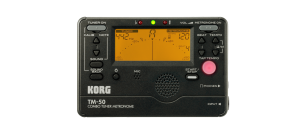
Getting Started on Practicing
Many students and parents have asked “How should we practice an instrument?”. Below are a list of 10 practicing tips I have learned to implement. They are in no particular order, so you can use whichever ones you think work best for you.
1. Set a time and keep a schedule
Set apart a time of the day and week to practice before the week starts, this will make sure that you actually HAVE the time to practice. With everything going on and trying to watch all the Netflix you can, we sometimes forget to practice. Putting it into a schedule and sticking to it will help maintain a consistent practice routine. Also, just like a physical workout routine, you can set different days to work on different things such as rhythm, tone, new music, sight reading, scales, etc.
2. Practicing a little each day is better than one long session
Unlike Netflix, you can’t binge practice, you need time to digest and reinforce the things that you are working on or learning. If you spend hours practicing you won’t remember what you did or learned at the beginning. This is similar to studying. Cramming before a big test won’t help you as much as studying little by little. By practicing a little each day, it gives you the ability not only to remember what you did before, but also builds stamina in your playing over the long run. It also doesn’t take up your whole day; it’s a smaller portion if you put it into perspective. I would rather practice 30 minutes everyday than 3.5 hours in one shot.
3. Skip easy parts and work on harder parts
The easiest thing to do is to practice the parts you can play the best because it doesn’t really take much work. Unfortunately, when you get to the harder parts, you can’t really play them all too well. Skipping those easier parts and focusing on the harder parts will help you learn and perfect those harder parts to the point where the harder parts now become easy.
4. Practice in small sections until you can play it perfectly
This goes hand in hand with the last tip. Breaking down a difficult piece into smaller sections will make challenging music easier to learn. Once you get a small piece perfect, you can move on to the next part. Once you perfect the next part, put it all together. Then, move on to the next new part and repeat the process.
5. Go slow
Many students want to play as fast as they can, when in fact they can’t even play it slow. I tell my students “you won’t be able to play it fast until you can learn to play it slow.” It’s harder for students to conceptualize playing slowly. Playing slowly will help to play consistently and gives time to work things out while playing. You’re able to visualize what’s coming up ahead. After gaining the muscle memory, then you can move forward a little faster. One of the best tips my college professor told me when practicing was “play the hardest part perfectly, as fast as you can, then play the entire piece at that tempo to get a feel of playing the whole piece together without stopping.” Stopping will only teach you to hesitate at those spots. Going slow helps to eliminate that hesitation while playing.
6. Take breaks
Since we are halfway through the list, it’s a good time to take a break from writing. (15 minutes later) Take a break, grab some water, eat a snack (rinse your mouth after if you play an instrument you blow in to), check your texts and Instagram or Snapchat. After walking away, come back and refocus so that practicing doesn’t seem tedious. Plus the small distraction forces to remember what was done previously which helps with reinforcement.
7. Use a metronome
The metronome is probably one of the most useful tools that you will use while practicing. It helps maintain consistency of tempo while playing. It also forces you to listen to the metronome for the tempo and not just focus on what you’re playing. Using a metronome helps create the atmosphere of playing with a group, where you are not the one setting the speed of the beat. The Korg TM-60 is a great affordable option. It is both a metronome and a tuner in one package, featuring separate controls for each function which makes it easy to use. Korg is known for reliability and I still use daily an old Korg metronome for fifteen years ago.
8. Use a music stand for proper posture

Another one of the most useful tools you will use in practicing is a music stand. It helps to hold your music but also enforces proper posture. I used to be guilty of putting my music down on a chair or on my bed to practice when I was younger, and I’m sure there are many other students out there doing the same thing. It’s not just about convenience, playing hunched over can affect embouchure and breath support. A stand is essential and should be used instead of a chair, bed, or table. Fortunately, there are some very affordable options. The On-Stage folding music stand is less than $20, includes a carry case, and is very light and easy to transport. The On-Stage stand (SM7122) is perfect for students practicing at home. Both Manhasset and Stageline make terrific music stands, they are more expensive than the On-Stage, but last a lifetime and are far more durable. The Manhasset stand is made in the USA and can be found in nearly every music room in the world.
9. Reward yourself with something fun!
Playing something fun or popular will help you to enjoy your practice time. This is one of my favorite practicing tips! There are many books out there with just about anything to play. I have seen Disney books, movie theme songs, pop songs, video game theme songs, holiday music (for when you want to show off to your family over for the holidays) and anything else you can think of. If you can think of it, I’m sure it’s out there. There are also some challenging pieces as well. Paul Effman Music Store has a great selection of fun play-along books, where you can play-along with Harry Potter, Star Wars, and more!
10. Record yourself while practicing
Many people record themselves while speaking so that they can hear what they sound like and work on how they pronounce words or place emphasis on certain things. The same principles apply when playing music. Recording yourself while practicing allows you to hear what you sound like and helps you hear things you want to work on. When recording your practice and performances, you will quickly find what you think you sound like is rarely what you really sound like. This works both in a positive and negative way, where you may sound a lot better than you thought, or hear parts that need work that you thought were great. Either way, the goal is to sound great when performing live and reviewing your practice sessions will help tremendously.
I highly recommend the Focusrite Scarlett Solo Bundle for recording your sessions. This bundle includes a microphone, headphones, software and a digital box for your computer or laptop. Of course you can use the built-in recorders on a phone or tablet, but these usually don’t accurately represent your tone and sound development.
There you have it, all of my secret tips I’ve learned over the years to help make practicing more effective, fun and productive. All of the products that were mentioned can be found at pemusicstore.com. I hope these practicing tips help with your practicing!


